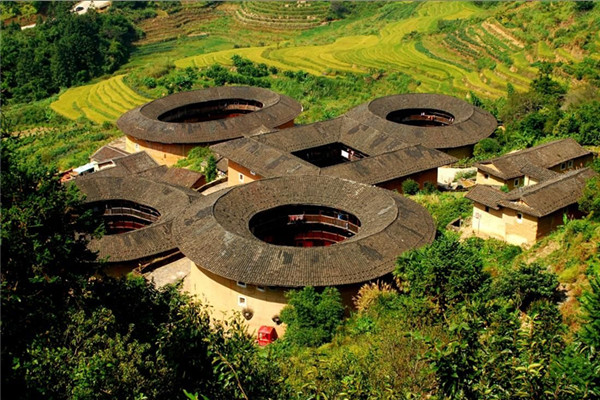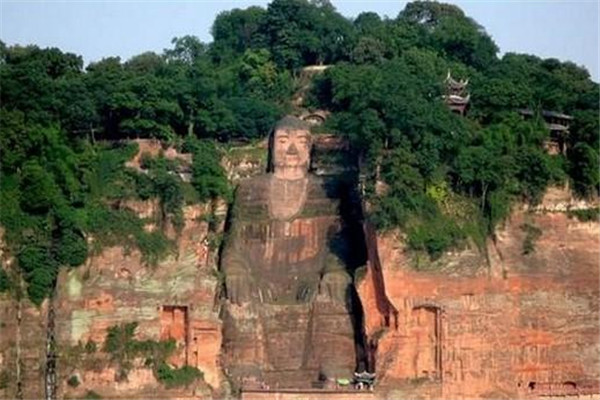Since joining the International Convention Concerning the Protection of World Cultural and Natural Heritage 31 years ago, China has had 48 locations named as UNESCO World Heritage Sites. That number is second only to Italy's 51, with 34 of the Chinese venues designated as cultural, 10 as natural, and four as mixed.

China has had 48 locations named as UNESCO World Heritage Sites.
On November 6th, 1972, the 17th Session of the General Conference of the United Nations Educational, Scientific, and Cultural Organization adopted the Convention Concerning the Protection of World Cultural and Natural Heritage. Four years later, UNESCO established the World Heritage Committee, which is an inter-governmental cooperative body. This panel is responsible for adding Cultural and Natural Treasures of Outstanding Universal Value to the World Heritage List.
China ratified the Convention as a contracting party in 1985. One year later, the country began to identify and nominate locations in its territory to be considered for inclusion on the World Heritage List — and on October 29th, 1999 — China became a member state of the World Heritage Committee.

Mount Emei Scenic Area — including Leshan Giant Buddha Scenic Area (1996)
The number of spots around the nation on the current list is 48, which ranks second overall, behind the 51 in Italy. These venues comprise some of China's most essential tourism resources, including the Great Wall, Mogao Caves, and the Imperial Palaces of the Ming & Qing Dynasties in Beijing & Shenyang, all of which were among the first selections included in the list.
Here is a full list of China's 48 world heritage sites.
Cultural (34)
Ancient Building Complex at Wudang Mountains (1994)
Ancient City of Pingyao (1997)
Ancient Villages in Southern Anhui — Xidi & Hongcun (2000)
Capital Cities & Tombs of Ancient Koguryo Kingdom (2004)
Chengde Mountain Resort & Outlying Temples (1994)
Classical Gardens of Suzhou (1997)
Cultural Landscape of Honghe Hani Rice Terraces (2013)
Dazu Rock Carvings (1999)
Fujian Tulou (2008)
Grand Canal (2014)
Great Wall of China (1987)
Historic Center of Macao (2005)
Historic Ensemble of Potala Palace in Lhasa (1994)
Historic Monuments of Dengfeng in “The Center of Heaven & Earth” (2010)
Imperial Palaces of Ming & Qing Dynasties in Beijing & Shenyang (1987)
Imperial Tombs of Ming & Qing Dynasties (2000)
Kaiping Diaolou & Villages (2007)
Longmen Grottoes (2000)
Lushan National Park (1996)
Mausoleum of First Qin Emperor (1987)
Mogao Caves (1987)
Mount Qingcheng & Dujiangyan Irrigation System (2000)
Mount Wutai (2009)
Old Town of Lijiang (1997)
Peking Man Site at Zhoukoudian (1987)
Silk Roads: Routes Network of Chang’an-Tianshan Corridor (2014)
Site of Xanadu (2012)
Summer Palace — An Imperial Garden in Beijing (1998)
Temple & Cemetery of Confucius & Kong Family Mansion in Qufu (1994)
Temple of Heaven — An Imperial Sacrificial Altar in Beijing (1998)
Tusi Sites (2015)
West Lake Cultural Landscape of Hangzhou (2011)
Yin Xu (2006)
Yungang Grottoes (2001)
Natural (10)
Chengjiang Fossil Site (2012)
China Danxia (2010)
Huanglong Scenic & Historic Interest Area (1992)
Jiuzhaigou Valley Scenic & Historic Interest Area (1992)
Mount Sanqingshan National Park (2008)
Sichuan Giant Panda Sanctuaries — Wolong, Mount Siguniang, Jiajin Mountains (2006)
South China Karst (2007)
Three Parallel Rivers of Yunnan Protected Areas (2003)
Wulingyuan Scenic & Historic Interest Area (1992)
Xinjiang Tianshan (2013)
Mixed (4)
Mount Emei Scenic Area — including Leshan Giant Buddha Scenic Area (1996)
Mount Huangshan (1990)
Mount Taishan (1987)
Mount Wuyi (1999)















